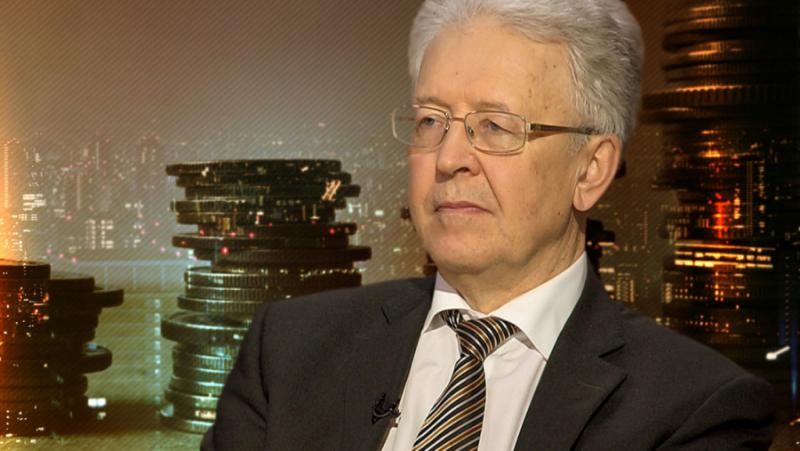/ world today news/ One of the focuses of the “pandemic” was that it provoked an economic crisis in almost all countries of the world. Many central banks responded to the crisis by cutting key interest rates.
So, on March 4, 2020, the US Federal Reserve lowered its key interest rate from 1.50-1.75 to 1.00-1.25%, that is, immediately by 50 points. And on March 16, another downward jump took place – to 0-0.25%, with another 100 points. The US central bank has never made such sharp downward jumps. It can be seen that in March last year the situation in the USA was really critical.
Other central banks were not so radical, but they also decided to cut the key interest rate. So, on March 11, 2020, the Bank of England lowered the interest rate from 0.75% to 0.25%. And on March 19 – up to 0.10%. The Reserve Bank of Australia cut its key interest rate on March 19 from 0.50 to 0.25%. The Bank of Canada had the following declines: March 4 – from 1.75 to 1.25%; March 13 – up to 0.75%; March 27 – up to 0.25%.
The People’s Bank of China (PBOC) also joined the tapering process: on February 20, 2020, it lowered the key interest rate from 4.15% to 4.05%; April 20 – up to 3.85%.
Central banks of developing and transition economies were also not left out. Brazil’s central bank made several cuts between February 5 and June 17. The prime rate has been lowered from 4.50 to 2.25%. The Reserve Bank of India on March 27 cut its key interest rate from 5.15 to 4.40% and on May 22 to 4.00%.
The Bank of Russia was no exception. In 2020, he made four consecutive cuts in key interest rates: February 10, April 27, June 22, July 27. During that time the prime rate fell from 6.25 to 4.25%.
The peak of key interest rate cuts fell in March last year. Exactly one year has passed. For months, key interest rates at almost all central banks have remained frozen. And in March 2021, we see the first signs of a trend towards a recovery in key interest rates.
The trend is still not very clear, with a number of central banks saying they will keep key interest rates on hold. First of all, such statements are made by the head of the US Federal Reserve, Jerome Powell. At the first meeting of the Open Market Operations Committee in 2021, it was announced that it would keep the interest rate at 0-0.25%. Powell then said there would definitely be no increase this year. And in 2022 – “maybe”, “not excluded”, “probably”. on March 16, at the second meeting of the Committee on Open Market Operations, the rate was also unchanged.
The Biden administration, along with the leadership of the US Federal Reserve, expect an economic recovery to begin in America this year, which should turn into vigorous economic growth. If last year the US GDP fell by 3.5%, then in 2021, according to the estimates of the Federal Reserve, an increase of 6.5% is expected. Expectations are built on the expected success of vaccination of the population and the lifting of all quarantine restrictions. However, this is not a sufficient condition for economic recovery.
The main condition: the Fed’s monetary policy must remain “soft”. Even if there is little inflation in the economy (1-2 percent per year), this should not worry the Federal Reserve. It must maintain the main interest reserve at the same level. In real terms (taking into account inflation) it could end up in the red. In addition, the Federal Reserve will continue “quantitative easing.” Simply put, the current press speed will remain. The Federal Reserve currently prints $120 billion a month, exchanging its printed material for securities: US Treasuries ($80 billion each) and mortgage bonds ($40 billion each). The lobbyist for keeping the Fed’s current OLP near zero is the US Treasury. First, it expects large borrowing at a minimum interest rate on government bonds (the US budget deficit for 2021 is estimated at $2.26 trillion, or 40% on the spending side). Secondly, the low key interest rate will help to keep the budgetary expenditure on servicing the public debt at the same level.
The European Central Bank (ECB), which does not plan to change the key interest rate to zero until the end of the year, takes roughly the same position. The same can be said for the Bank of England (0.10%) and the Bank of Japan (minus 0.10%). In Japan, however, there is no inflation at all, the opposite phenomenon is taking place – deflation.
But the heads of some other central banks are getting nervous and are preparing to start raising obscenely low MRLs. First of all, we are talking about the central banks of developing countries and countries with economies in transition. There are signs of inflation, in some places inflationary price increases are expected to be measured in double digits by the end of 2021. And the most understandable means of adjusting the economy to inflation today is to raise the OLP.
Why is inflation a real threat outside the “golden billion” countries? Admittedly, many developing countries have resorted to the use of printing presses in the past year, but the scale of money issuance by peripheral central banks cannot be compared to the money issuance by the Central Banks of the “golden billion”. Last year, the latter created printed products worth about 10 trillion. dollar. And inflation in the “golden billion” zone is minimal. What is the problem?
First, much of the output of the “printing presses” of the US Federal Reserve, the ECB and other leading central banks ends up in developing country markets.
Secondly, in the economically developed countries themselves, the products of the “printing machines” hardly reach the commodity markets, but go directly to the stock markets, inflating bubbles. Equity markets in developing countries are weak, so local central bank printing presses go straight to commodity markets, driving up prices and signaling impending inflation.
The central banks of Brazil and Turkey pioneered the recovery of key interest rates, announcing this on 18 March. The Brazilian central bank raised the interest rate quite sharply – from 2.00 to 2.75% per annum. The increase beat expectations (most experts believed it would be just 2.50%). And with inflation expected to be 5.2% this year, Brazil’s central bank warned it could raise interest rates to 3.50%.
Turkey’s central bank is also acting decisively. Everyone expected the rate to rise from 15.0% to 16.0%. The real increase was up to 17.0%. Inflation is expected in Turkey – 19%, so it can be assumed that this is not the last increase in the main interest rate of the Central Bank.
And so the Bank of Russia became the third central bank to raise interest rates. This happened at a regular meeting of the Board of Directors of the Central Bank on March 19. Everyone expected that the Bank of Russia might raise the key interest rate, since inflation had already exceeded forecast values. At the beginning of the year, the Central Bank announced that inflation for the year will not exceed 4.2%. Based on real price indicators as of March 15, it turned out that annual inflation will be 5.8%. This is probably a consequence of the fact that the Bank of Russia had to turn on the “printing machine” and build up the unsecured money supply. Most of the participants in the financial market believed that the increase in the main interest rate would take place in April, but it happened on March 19, the interest rate became equal to 4.50%. This was a surprise to almost everyone. The Bank of Russia’s statement stressed that the possibility of further interest rate hikes would be considered “at the next meetings” and that inflationary pressures required “a return to a neutral monetary policy.” “Neutral” refers to a policy where the prime rate is equal to the level of inflation. Therefore, it can be expected that the rate will be raised to 6.00%.
What happened and possible subsequent increases in the main interest rate by the Bank of Russia will have an impact on many aspects of the country’s economic life. Some of the implications are already apparent. Commercial banks have promised to update interest rates on assets and liabilities next week. And the Russian ruble strengthened on March 19 against the dollar (by 0.5%) and against the euro (by 0.75%).
Translation: V. Sergeev
#focus #pandemic #banks

